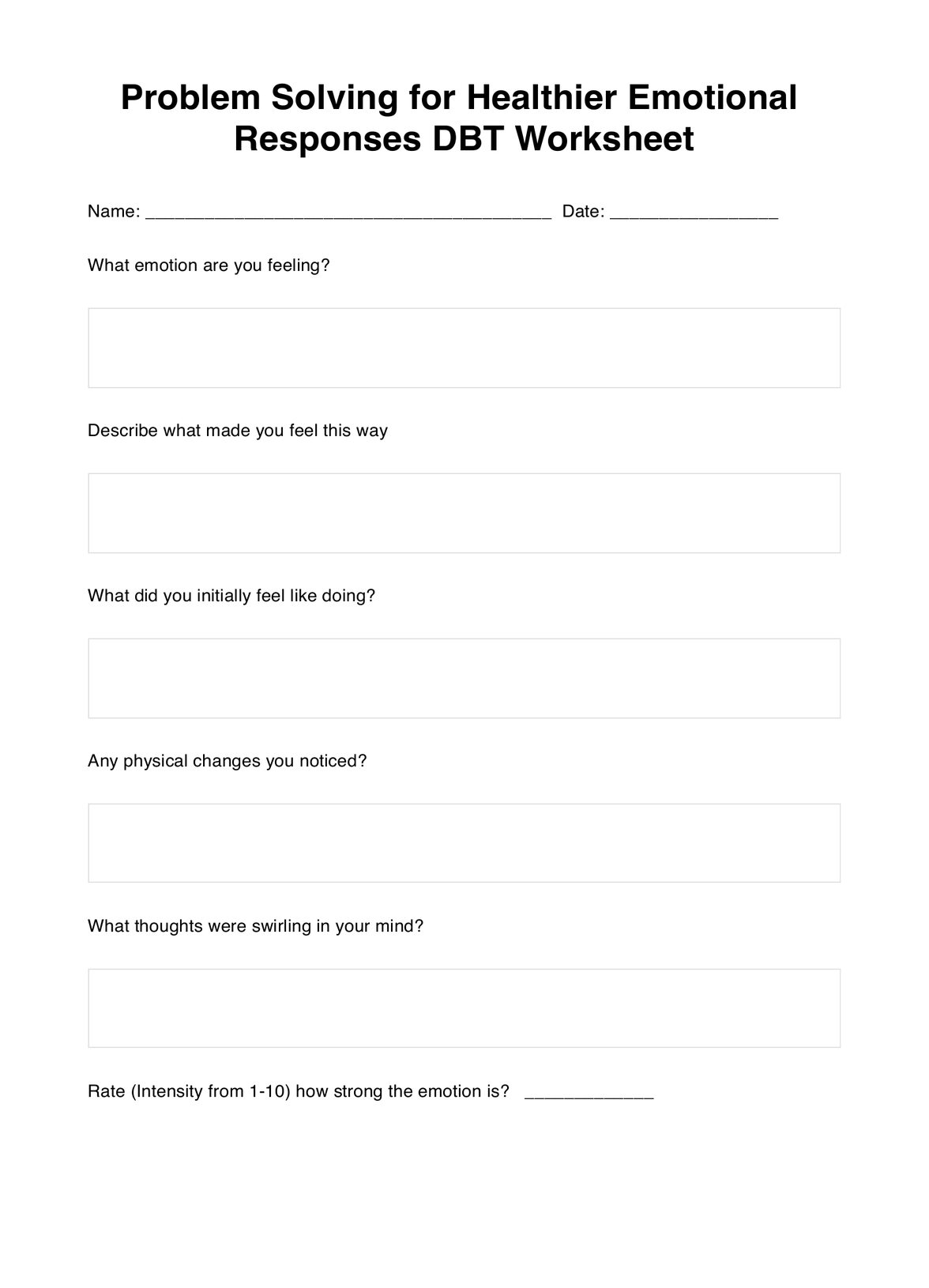The time it takes to complete the Problem Solving for Healthier Emotional Responses DBT Worksheet can vary based on individual engagement and the complexity of the emotions being addressed. Generally, it might take around 15 to 30 minutes to work through the worksheet thoroughly.

Problem Solving for Healthier Emotional Responses DBT Worksheet
Enhance emotional well-being with the Problem Solving for Healthier Emotional Responses DBT Worksheet. Manage emotions effectively for a healthier you.
Problem Solving for Healthier Emotional Responses DBT Worksheet Template
Commonly asked questions
The Problem Solving for Healthier Emotional Responses DBT Worksheet assists individuals by providing a structured framework to navigate intense emotions. It helps them recognize triggers, assess reactions, and choose effective strategies to manage emotions constructively, ultimately leading to improved emotional regulation and well-being.
This worksheet is best used when individuals experience heightened emotions, encounter stressors, or want to enhance their emotional management skills. It's particularly beneficial during moments of emotional turmoil, major life events, or as part of regular self-care routines.
EHR and practice management software
Get started for free
*No credit card required
Free
$0/usd
Unlimited clients
Telehealth
1GB of storage
Client portal text
Automated billing and online payments











